Effective Strategies for Bird Nest Management
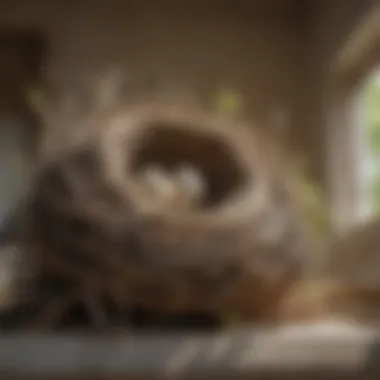
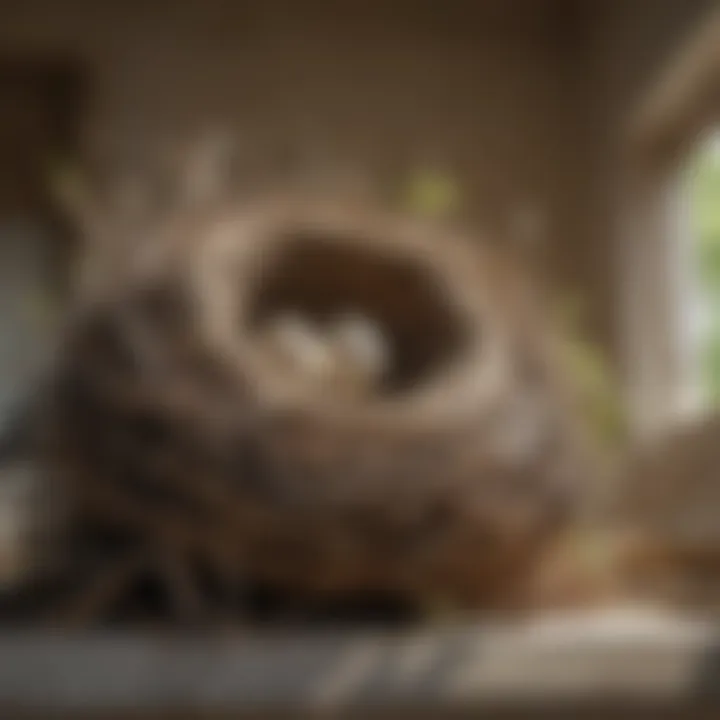
Intro
The presence of birds nesting in residential spaces can create various challenges. Homeowners often face problems related to structural damage, hygiene issues, and personal safety. The necessity of managing these challenges effectively and humanely calls for a comprehensive examination of preventive pest control strategies. This article provides a guide to address these nesting issues through proactive measures while considering legal aspects and environmental impact.
Preventive Pest Control Strategies
To mitigate the risk of bird nesting, homeowners must adopt several preventive strategies. Focusing on the home's exterior, yard, cleanliness, garbage disposal, and other pest prevention methods can lay the groundwork for a pest-free environment.
House Exterior Protection
One of the first steps in preventative pest control is to protect the house’s exterior. This can be achieved through the following techniques:
- Tips for sealing cracks: Inspect the exterior and look for cracks in walls, gutters, and eaves. Utilizing caulk or foam insulation can close these openings effectively.
- Clearing debris: Regularly removing debris, such as leaves or twigs, from gutters and roofs prevents nesting materials from accumulating.
- Preventing pests from entering: Install screens on vents and chimneys to discourage birds and other pests from gaining access.
Yard Maintenance
Regular yard maintenance is crucial in keeping birds and other pests at bay. Homeowners should adhere to these essential routines:
- Essential yard care routines: Trim back overgrown vegetation and mow the lawn frequently to deter nesting areas.
- Methods for keeping yard pest-free: Applying mulch can help suppress weeds, while proper watering techniques prevent creating moist habitats.
Indoor Cleanliness
Maintaining a clean indoor environment plays a vital role in pest control. Here are expert tips and techniques:
- Expert cleaning tips: Regular vacuuming, dusting, and disinfecting surfaces can help prevent interior nesting and pest issues.
- Maintaining a pest-resistant indoor environment: Seal food tightly, use airtight containers, and promptly address any spills or food waste.
Garbage Disposal
Proper waste disposal methods are critical in reducing pest attraction:
- Efficient waste disposal methods: Keep garbage bins sealed and remove waste regularly to minimize odors.
- Importance of proper garbage disposal: Food scraps attract various pests, including birds, so maintaining cleanliness is essential.
Other Pest Prevention Strategies
Implementing innovative ways to safeguard your home is important in preventive pest control:
- Use bird deterrent devices, such as reflective tape or plastic owls, to discourage birds from nesting on ledges and roofs.
- Educate yourself about the local bird species and their nesting habits, allowing for tailored strategies that align with both humane considerations and pest control.
Identifying Pest Risk Areas
Identifying potential pest risk areas is critical in managing nesting issues. Homeowners should regularly inspect specific locations.
Moisture Prone Areas Inspection
- Identifying damp conditions: Inspect basements, attics, and areas around pipes for moisture buildup. It is important to address leaks and increase ventilation in these areas.
- Tips for preventing infestations: Using dehumidifiers can significantly reduce moisture levels and deter pests.
Crack and Crevice Inspection Guide
- Importance of inspecting access points: Regular checks for cracks and crevices help limit access points for pests.
- Strategies for sealing cracks and crevices: Apply weather stripping, caulk, or expanding foam to seal gaps and prevent unwanted entry.
Greenery Inspection for Pest Risks
- Understanding greenery's impact on pests: The presence of certain plants can attract birds and other pests. Be cautious when selecting garden plants.
- Guidelines to maintain pest-free yards: Foster a diverse plant environment that is less attractive to pest species while supporting beneficial birds.
Additional Pest Risk Areas
- Areas such as attics, sheds, and garages may harbor nests. Regular inspections in these spaces can help prevent infestations.
"Regularly monitoring your environment and addressing risk factors can significantly decrease the chance of bird nesting issues."
Effective Pest Control Methods
When preventive measures are not enough, homeowners might need to implement effective pest control methods.
Natural Repellents for Pest Control
- Safe and effective natural solutions: Employ solutions like vinegar or soap sprays to deter pests naturally.
- Use of essential oils, herbs, and plants: Aromatic plants can repel specific bird species while enhancing indoor air quality.
Chemical Sprays for Pest Control
- Safe usage of professional sprays: Follow product guidelines and select sprays that target birds without harming other wildlife.
- Eradicating pests with chemical solutions: Sometimes a targeted approach might be necessary to address significant infestations.
Pest Traps: Effective Pest Control Solutions
- Setting up and using pest traps: Employ traps that can safely catch and release birds away from residential spaces.
- Capturing and removing pests safely: Ensure use of traps is aligned with humane treatment principles.
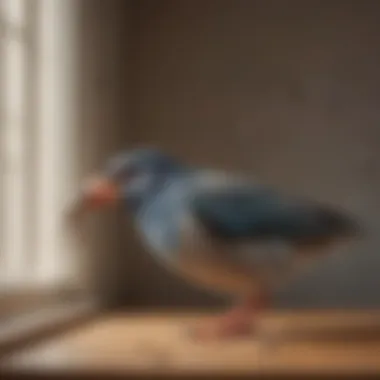
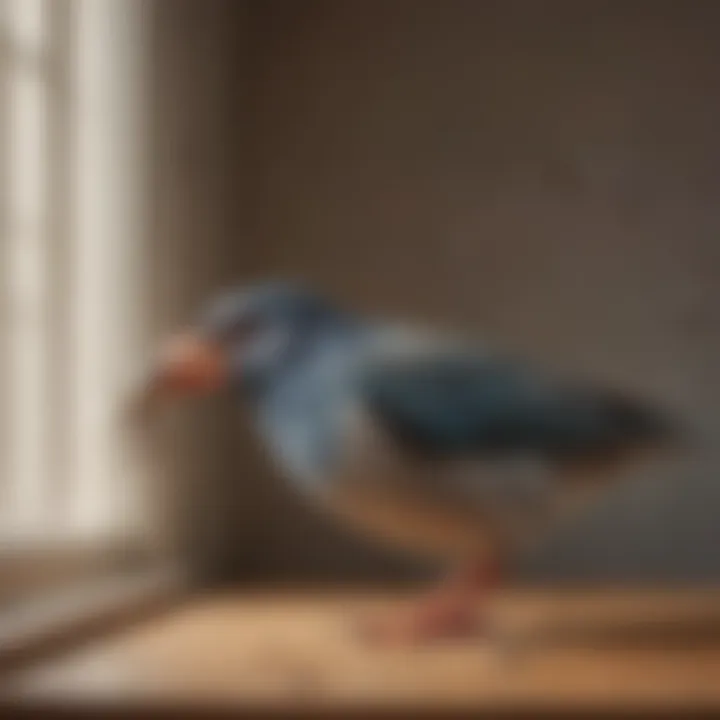
Biological Control Methods for Pest Prevention
- Using natural predators for pest management: Introducing natural predators can help control pest populations effectively.
- Environmental-friendly pest control techniques: Focus on sustainable and non-toxic methods wherever possible.
Other Pest Control Methods
- Innovative methods, such as ultrasonic devices that emit frequencies intolerable to birds, can be employed for pest control without harm.
Pest Species Identification
Proper identification of pest species is essential for effective management:
Common Insects in Home Pest Control
- Recognizing and managing insect infestations: It is important to identify insects like ants, cockroaches, and spiders.
- Types of insects like ants, cockroaches, and spiders: Understanding their behavior helps in formulating management strategies.
Identifying Rodents for Pest Prevention
- Tips for identifying and preventing rodent invasions: Look for droppings, gnaw marks, or nests.
- Types of rodents including mice and rats: Knowing these species ensures targeted prevention methods are effective.
Bird Species Impacting Home Environments
- Addressing bird-related issues around the home: Certain birds can cause problems; understanding their nesting habits is key.
- Troublesome bird species in residential areas: Pigeons and starlings frequently seek nesting sites near human habitats and may require specific interventions.
Dealing with Wildlife on Your Property
- Handling wildlife encounters effectively: Know how to respond to wildlife encounters to avoid conflict.
- Behavior and control measures for wildlife species: Proper education on wildlife can aid in effective management.
Miscellaneous Pest Species Identification
- Identifying and managing lesser-known pests, such as certain beetles or small mammals, is crucial for effective control.
DIY Pest Control Techniques
Homeowners can implement several DIY pest control techniques:
Homemade Pest Control Solutions
- Eco-friendly homemade pest control remedies: Create mixtures using household items like soap, vinegar, or baking soda to deter pests.
- Protection against pests using simple DIY methods: Developing traps from everyday materials can also be effective.
Using Essential Oils for Pest Control
- Repelling pests naturally with essential oils: Oils like eucalyptus or peppermint can deter various pests effectively.
- Creating a bug-free environment at home: Use diffusers or sprays for a consistent and pleasant pest deterrent.
Effective Pest Traps and Barriers
- Setting up traps and barriers for pest control: Utilize homemade traps and strategically placed barriers to keep birds and pests away.
- Controlling and preventing pest infestations: Monitoring effectiveness and adjusting strategies accordingly is critical.
Top Reputable Pest Control Brands
- Products for home pest management from trusted brands: Consider options from businesses like Orkin, Terminix, and EcoSMART to bolster pest control.
- Safeguarding your home with effective solutions: Research properly to find products that align with the homeowner's needs.
Miscellaneous DIY Pest Control Techniques
- Explore unique methods suited for various pest issues that come up in everyday life, focusing on health, safety, and environmental concerns.
Understanding the Problem
Bird nesting in residential areas is not solely a matter of aesthetics; it presents various practical concerns that homeowners must address. Understanding the problem is crucial for effectively managing bird nesting issues.
Many people appreciate birds for their beauty and the role they play in the ecosystem, but their nesting habits can lead to significant challenges. For instance, nests may block drainage systems, create hygiene problems, and even result in structural damage to buildings. Knowledge of these implications is essential prior to taking any action. Ignoring these concerns can lead to more severe problems down the line, making awareness necessary for homeowners.
The Nature of Bird Nesting
Bird nesting behavior is instinctual and shaped by various factors such as species, climate, and available resources. Birds seek safe and sheltered locations to lay their eggs and raise their young. This compulsion often drives them to find spaces in and around homes. Common nesting spots include eaves, attics, and outdoor furniture.
Moreover, nesting cycles and behaviors vary among species. For example, sparrows tend to nest in cavities, while swallows prefer to build mud nests on overhangs. Understanding the particular traits and requirements of nesting birds can help homeowners anticipate and manage potential issues.
Common Birds That Nest in Homes
Several bird species are known for nesting in human habitats. The most common include:
- House Sparrow: Often found in urban settings, these birds prefer to nest in nooks and crannies around houses.
- American Robin: Robins typically build their nests in shrubs, trees, or ledges of buildings.
- Barn Swallow: These birds are attracted to barn-like structures, but can also settle for porches or ledges.
- European Starling: They often seek out vents and eaves for nesting, which can cause problems for homeowners.
Identifying the species is important as it can influence management strategies. Different birds have different nesting habits and legal protections, which can affect removal techniques.
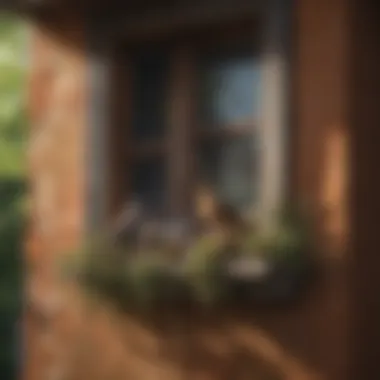

Potential Issues Arising from Nesting
Nesting birds can present several challenges. These issues include:
- Structural Damage: Nests can block ventilation systems, degrade materials, and contribute to roof leaks.
- Health Hazards: Bird droppings can carry diseases and pose health risks to humans and pets.
- Fire Hazards: Nest materials can obstruct electrical appliances, posing a risk of fire.
- Noise Pollution: Nesting activity can increase noise levels, especially during breeding seasons.
Recognizing these challenges early can save homeowners from costly repairs and health issues. Being proactive in the management of bird nests is key to maintaining a safe and pleasant living environment.
Legal Considerations
Understanding the legal framework surrounding bird nesting issues is essential for homeowners. Failure to comply with local wildlife laws can result in penalties, both legal and financial. Moreover, awareness of these regulations reflects a broader commitment to environmental stewardship. Knowing the specifics around bird protection not only aids in handling current situations but also helps in planning preventive measures for the future.
Understanding Local Wildlife Laws
Local wildlife laws can vary significantly from state to state or even between municipalities. It's crucial to research your specific laws regarding the removal of bird nests and the treatment of nesting birds. In many locations, certain species of birds are protected under the Migratory Bird Treaty Act or state conservation laws. These regulations make it illegal to harm these birds or disturb their nests during the breeding season.
Failing to understand these laws can lead not only to fines but also to the unintended consequence of harming local wildlife populations. Therefore, it's prudent to consult resources such as local wildlife agencies or wildlife rehabilitators before taking action. This can offer clarity on potential legal implications and guide homeowners to act within their rights.
"Bird protection laws exist not just for the birds’ sake, but also for the ecological balance."
Protecting Migratory Birds
Migratory birds play a vital role in many ecosystems. They contribute to pollination, seed dispersion, and natural pest control. Protecting these species is crucial for maintaining biodiversity. Homeowners need to consider that many migratory species return to the same nesting spots year after year.
To protect migratory birds, homeowners can take several steps:
- Educate Yourself: Understanding the types of migratory birds in your region can aid in planning preventive measures.
- Timing is Key: Be aware of the nesting season in your area. Most birds nest during spring and summer, which means that actions to remove nests should be delayed until after the nesting period.
- Provide Alternative Nesting Options: If you are concerned about birds nesting on your property, consider providing suitable nesting boxes away from your home.
By respecting the legal considerations and protecting migratory birds, homeowners can contribute positively to their local ecosystems while managing their nesting issues effectively.
Prevention Techniques
Preventing bird nesting issues in residential spaces should be a priority for homeowners. Implementing effective strategies can save time and resources in the long run. By taking action before birds establish nests, you can avoid the inconveniences associated with removal and damage. This section highlights practical steps that can help deter birds from nesting around homes.
Identifying and Securing Entry Points
Birds seek out small openings to build their nests. To minimize their chance of establishing a presence, it is important to identify potential entry points. Inspect your home for any gaps, cracks, or holes. Common areas where birds may enter include vents, eaves, and rooflines. Seal any openings with appropriate materials such as wire mesh or caulk. This not only keeps birds out but also enhances the energy efficiency of your home. Regular maintenance checks can further ensure that potential nesting spots are not overlooked.
Using Deterrents Effectively
Deterrents play a significant role in discouraging birds from nesting. When used properly, they can create an uninviting environment for birds and help maintain your home's integrity.
Visual Deterrents
Visual deterrents can be effective in preventing birds from nesting. These include items such as reflective tape, predator decoys, and shiny objects that catch sunlight. The key characteristic of visual deterrents lies in their ability to affect birds' natural behavior by creating confusion. They exploit birds' instinctive fear of predators, thus making these methods beneficial for homeowners. One unique feature of visual deterrents is their low maintenance requirements. However, they can lose effectiveness over time if birds become accustomed to them, so periodic changes are necessary to ensure their continued efficacy.
Sound Devices
Sound devices can also serve as a deterrent for birds. These devices emit sounds that mimic predators or distress calls to create a hostile environment for nesting birds. Their key characteristic is that they can cover a wide area, thus protecting multiple entry points simultaneously. Sound devices are a popular choice due to their ease of installation and effectiveness. A limitation of sound devices is that they may lose effectiveness as birds adapt or when sounds are no longer perceived as alarming. Regular adjustments in volume or frequency may be required to keep the deterrent attractive to birds.
Chemical Deterrents
Chemical deterrents, such as bird repellent gels or sprays, can be used to discourage nesting. Their key characteristic is that they can create an unpleasant experience for birds without harming them. Chemical deterrents can be a beneficial addition to a comprehensive prevention strategy. However, one significant drawback is the need for frequent reapplication, especially in outdoor settings exposed to rain or high winds. Careful consideration should be given to the potential effects on other wildlife.
Creating Unattractive Nesting Conditions
Another important aspect of prevention is making your home unattractive for birds. This can involve simple tasks such as keeping gutters clean and removing debris. Additionally, consider using physical barriers like mesh screens over vents and openings. By removing potential nesting material and securing areas where birds may consider nesting, you can reduce the probability of a nesting issue. Regular upkeep goes a long way in maintaining an environment that is less appealing to birds.
Humane Removal Methods
Efficiently managing bird nesting issues requires a humane approach that understands the complexities of local wildlife. This section emphasizes the significance of humane removal methods for homeowners. Addressing bird nesting issues involves not just the physical removal of nests, but also ensuring the safety and welfare of the birds involved. Ignoring this aspect may not only lead to legal implications but also negatively affect local ecosystems.
Using humane removal methods reflects a commitment to ethical treatment of wildlife. This approach minimizes stress for both the birds and the homeowners, fostering a more harmonious coexistence. Understanding and respecting the natural behavior of birds is vital. This means considering the time of year, species involved, and specific nesting habits.
Assessing the Situation
Before taking any action regarding bird nests, it is important to thoroughly assess the situation. Observing the nesting behavior and identifying the bird species will provide insights into their nesting patterns. For example, different birds have distinct preferences for nesting locations and timing.
Take note of the following when assessing:
- Species Identification: Understand which species are nesting to make informed decisions.
- Nesting Timeline: Recognize the breeding season for the identified species. Most birds build their nests and raise their young during specific times of the year.
- Location: Determine where the nest is situated; some areas pose higher risks for damage or hygiene issues.
By clearly assessing the situation, homeowners can better plan their removal strategies.
Timing Your Actions Correctly
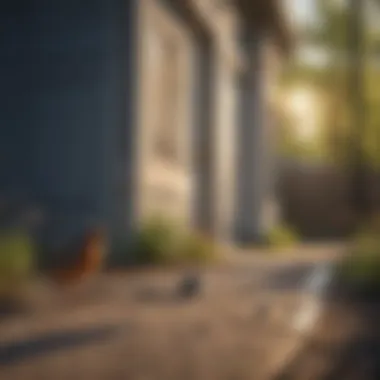
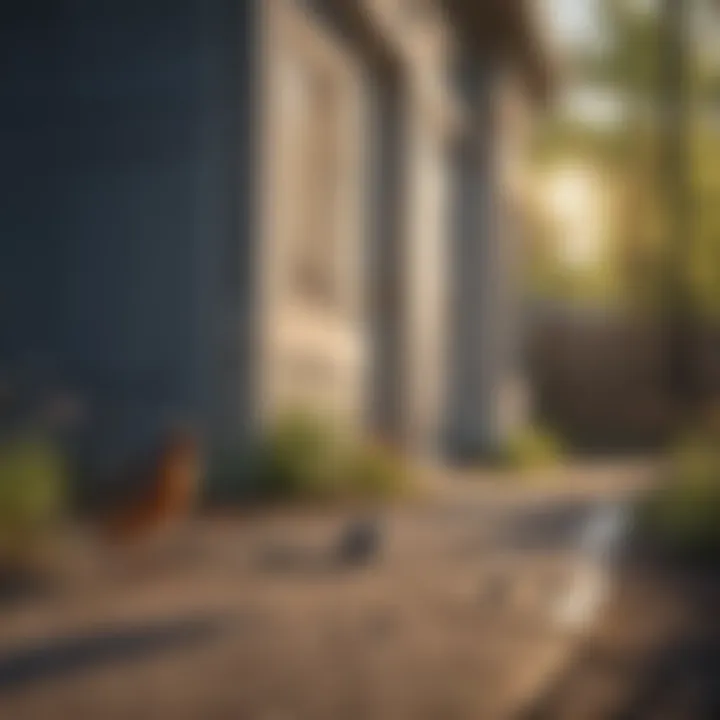
Timing is a crucial factor in the process of removing bird nests. Taking action during the wrong time of year can lead to unintended consequences, such as abandoning chicks or causing undue stress to adult birds. Homeowners should aim to consult local guidelines regarding the breeding seasons for various bird species.
Here are some key considerations for timing:
- Breeding Season Awareness: Removal of nests should generally occur outside of the breeding season.
- Developmental Stages: Understand the chicks' age and development to determine if they can survive if the nest is disturbed.
- Local Wildlife Regulations: Compliance with local laws regarding wildlife protection and nesting seasons is vital. This will help avoid any legal ramifications.
Choosing the right moment is not just about personal convenience; it plays a significant role in the effectiveness of humane removal efforts.
Relocating Nests and Birds
If removal is necessary, consider relocating nests and birds as a viable humane option. This method involves transporting nests to safe locations away from residential structures. The process should be handled delicately, ensuring minimal disturbance and stress to the birds.
Important steps for successful relocation include:
- Consultation with Experts: Seek advice from wildlife professionals or local wildlife agencies. They can provide guidance on suitable relocation methods based on species and local laws.
- Creating a Suitable Nesting Area: The new location should provide suitable habitat for the birds, with access to food and shelter.
- Monitoring Post-Relocation: After moving the nest, keep an eye on the new area to ensure birds settle in comfortably and do not return to the original location.
Utilizing humane relocation techniques respects wildlife while addressing the challenges posed by nesting birds. Employing these methods helps strike a balance between home maintenance and environmental stewardship.
Post-Removal Strategies
After a bird nesting issue is resolved, it is crucial to implement effective post-removal strategies. These steps ensure that areas previously affected by nesting are treated properly and that the risk of future occurrences is minimized. Successful management of these strategies contributes to a healthier living environment, enhancing both property upkeep and resident peace of mind.
Cleaning and Disinfecting Affected Areas
Once the nesting materials are removed, cleaning and disinfecting the affected areas becomes paramount. Bird droppings and nesting materials can pose health risks. They may contain pathogens that can lead to respiratory issues or other health-related problems. Therefore, it is essential to thoroughly clean the spaces where nesting occurred.
- Wear Protective Gear: Always start by wearing gloves, a mask, and eye protection to safeguard from harmful substances.
- Remove Debris: Carefully remove any leftover nest materials. This includes twigs, feathers, and droppings. Dispose of these items in a sealed bag to prevent contamination.
- Clean Surfaces: Use a mixture of bleach and water or an appropriate enzyme-based cleaner. These solutions help eliminate viruses and bacteria. Make sure to scrub surfaces well, paying special attention to corners and crevices where residues may hide.
- Disinfect: After cleaning, use a disinfectant spray on the cleared areas. This step is necessary to ensure any remaining germs are effectively neutralized. Follow the manufacturer’s instructions for application and drying time.
- Ventilation: Keep the area well-ventilated during and after cleaning. Fresh air helps dissipate any harmful vapors from cleaning agents and promotes a safer environment.
Cleaning and monitoring these areas can also keep future nesting at bay, making this process indispensable in your post-removal strategy.
Monitoring for Future Nesting
After resolving a nesting issue, continuous monitoring is essential. Birds are creatures of habit, and if an area has been suitable for nesting before, it may attract them again in the future.
- Routine Checks: Conduct regular inspections of your property, focusing on potential nesting spots such as eaves, attics, and gutters. Look for signs of materials being gathered or droppings, which may indicate activity.
- Install Viewing Equipment: Consider using cameras or motion detectors in vulnerable areas. This equipment can alert you to any nesting attempts before they become established.
- Maintain Cleanliness: Keep outdoor areas tidy. Regularly remove any debris that birds might use for nesting. This means cutting back overgrown shrubs or clearing away excess wood or leaves that could attract them.
- Educate Household Members: Make sure everyone in your home understands the issue and knows how to spot signs of nesting. This collective awareness can help in noticing anything unusual early on.
Monitoring can produce a proactive approach to managing bird nesting. This diligence will not just protect your own home but also contribute to the local ecosystem's balance.
Impact on Local Ecosystems
When addressing bird nesting issues in residential spaces, it is essential to consider the broader impact such actions may have on local ecosystems. The presence of birds is not merely a nuisance to homeowners; birds play crucial roles in maintaining ecological balance. Understanding the contributions of birds to the environment can enhance our approach to managing nesting problems while preserving the natural world around us.
Understanding Bird Contributions
Birds are instrumental in several ecological functions. They contribute to pest control by feeding on insects and pests that can harm gardens and crops. Furthermore, many birds are pollinators, aiding in the growth of plants and the production of fruits and seeds. Birds also assist with seed dispersal, helping to maintain plant diversity which can enhance local flora. This interconnection emphasizes the necessity of recognizing their role before deciding on management strategies.
Most residential areas experience a variety of bird species, each providing unique benefits. For example, blue jays are known for their intelligence and ability to control insect populations. Hummingbirds, on the other hand, are vital for pollination, which supports not only garden plants but also local agriculture. Understanding these contributions helps homeowners appreciate birds as vital components of their surroundings.
Balancing Control and Conservation
While managing nesting issues is important, it should not come at the cost of local biodiversity. Balancing control of bird populations with conservation efforts should be a key consideration in any strategy. Control measures may be necessary for preventing structural damage or hygiene issues. However, approaches must prioritize humane and environmentally friendly methods.
For example, utilizing bird deterrents that cause no harm, such as visual or sound devices, can encourage birds to relocate without causing distress. Birdhouses and nesting pads can also provide alternative nesting sites, demonstrating a commitment to conservation while managing residential needs.
"Proper management ensures that the benefits birds provide to the ecosystem do not go unrecognized or unappreciated."
Final Considerations
Managing bird nesting issues in residential spaces involves a nuanced understanding of both the challenges posed by these avian visitors and the broader implications of their presence. This section emphasizes the importance of taking final considerations into account after employing strategies for control and prevention. Without a doubt, almost every attempt to resolve bird nesting issues should culminate in a reflective assessment, ensuring that the steps taken yield sustainable results and align with legal and ecological responsibilities.
Engaging Professional Help When Necessary
Sometimes, tackling bird nesting issues requires expert intervention. Homeowners may be tempted to manage situations independently, but there are instances where professional help is not just beneficial but essential. Professionals can accurately assess the scale of the problem, determine the specific species involved, and deploy appropriate methods for both removal and prevention.
Engaging specialists offers several distinct advantages:
- Expertise: Professionals are familiar with local regulations regarding wildlife management. They can provide guidance on what is legally permissible in terms of nest removal or bird deterrence.
- Safety: Birds can become aggressive if they feel threatened. Professionals understand how to handle birds safely without causing harm to either party.
- Sustainable Solutions: Experts are equipped to implement longer-term solutions, ensuring that nesting issues are managed effectively without leading to future problems.
Choosing to engage professionals may also save homeowners time and effort that could be spent dealing with an ongoing bird issue. Ultimately, when the situation is too complex or poses risks to personal safety, seeking help is the most prudent choice.
Educating Yourself About Bird Behavior
Understanding the behaviors and needs of birds is another crucial factor in managing nesting issues. The more you know about the specific bird species in your area, the better prepared you will be to handle any potential challenges they present.
Birds are often driven by instinct, and they may choose nesting sites based on factors like safety, food availability, and suitable shelter. Taking the time to educate yourself about these behaviors can lead to proactive measures that prevent unwanted nesting in the first place.
Here are some insights to consider:
- Nesting Preferences: Different bird species have specific preferences for nesting materials and locations. Recognizing these can help in taking preventive action.
- Seasonal Patterns: Many birds have predictable breeding seasons. Understanding these patterns can guide when to increase surveillance or implement preventive measures.
- Habitat Needs: Birds often require certain environmental factors to feel secure. By modifying the surroundings, it’s possible to discourage birds from nesting close to your home.
By investing time in education about avian behavior, homeowners can create an environment that is less conducive to nesting while respecting the needs of these creatures. This knowledge fosters a better coexistence between humans and birds, minimizing conflict and promoting ecological harmony.



